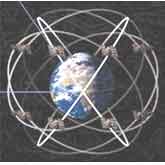NASA Marshall Space Flight Center
The George C. Marshall Space Flight Center, located in Huntsville, Alabama, is the U.S. government's civilian rocketry and spacecraft propulsion research center. As the largest NASA center, MSFC's first mission was developing the Saturn launch vehicles for the Apollo program.

Science Facts Written by NASA Marshall Space Flight Center
Mixed Up In Space
Imagine waking up in space. Groggy from sleep, you wonder ... which way is up? And where are my arms and legs? Throw in a little motion sickness, and you'll get an idea of what it can feel like to be ... Continue reading
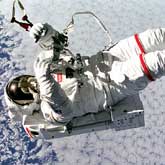
Bizarre Boiling
The next time you're watching a pot of water boil, perhaps for coffee or a cup of soup, pause for a moment and consider: what would this look like in space? Would the turbulent bubbles rise or fall? ... Continue reading

Right Ascension & Declination
Right Ascension (abbreviated R.A.) and Declination (abbreviated Dec) are a system of coordinates used by astronomers to keep track of where stars and galaxies are in the sky. They are similar to the ... Continue reading
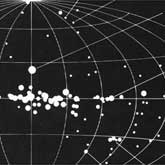
The Brave and Cold Ulysses
Deep space is cold. Very cold. That's a problem--especially if you're flying in an old spaceship. And your power supplies are waning. And the fuel lines could freeze at any moment. Oh, and by the way, ... Continue reading
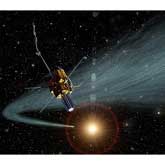
The Strange Spires of Callisto
When NASA's adventurous Galileo spacecraft skimmed a mere 138 km, (123 miles) above the surface of Jupiter's moon Callisto, onboard cameras captured the sharpest pictures ever of that moon's ... Continue reading
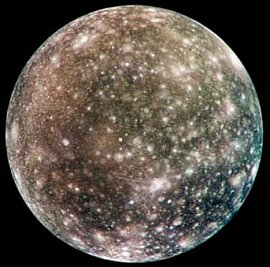
Liquid Crystal Communication
The Information Age rides on beams of carefully controlled light. Because lasers form the arteries of modern communications networks, dexterous manipulation of light underpins the two definitive ... Continue reading

Mount Olympus
Olympus Mons, the largest volcano in the solar system, towers a breathtaking 25 km above the surrounding plains on Mars. Until recently scientists thought that Olympus Mons and other volcanoes on the ... Continue reading
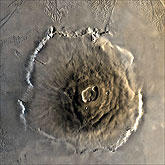
A River of Sand
Next time you're at the beach or in the desert, climb a sand dune in bare feet on a windy day. Stand still in various places on the gently sloping windward side. Watch how wind-driven sand grains ... Continue reading
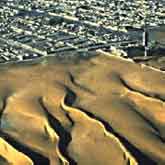
Ultraviolet Light
Ultraviolet light is a form of radiation which is not visible to the human eye. It's in an invisible part of the 'electromagnetic spectrum'. Radiated energy, or radiation, is given off by many ... Continue reading

Black Hole Sound Waves
Astronomers using NASA's Chandra X-ray Observatory have found, for the first time, sound waves from a supermassive black hole. The 'note' is the deepest ever detected from any object in our Universe. ... Continue reading
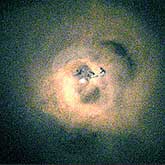
What Is Polarimetry?
Polarimetry is the technique of measuring the 'polarization' of light. Most of the light we encounter every day is a chaotic mixture of light waves vibrating in all directions. Such a combination is ... Continue reading

The Right Stuff for Super Spaceships
Revolutions in technology - like the Industrial Revolution that replaced horses with cars - can make what seems impossible today commonplace tomorrow. ... Continue reading
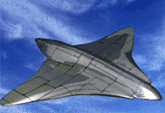
The Physics of Sandcastles
Give a plastic bucket and a shovel to a child, then turn her loose on a beach full of sand. She'll happily toil the day away building the sandcastle to end all sandcastles. It's pure fun. It's also ... Continue reading
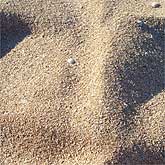
The Equivalence Principle
Four hundred years ago--or so the story goes--Galileo Galilei started dropping things off the Leaning Tower of Pisa: Cannon balls, musket balls, gold, silver and wood. He might have expected the ... Continue reading
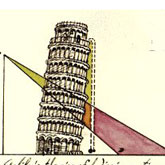
Ancient Planet
Long before our Sun and Earth ever existed, a Jupiter-sized planet formed around a sun-like star. Now, almost 13 billion years later, NASA's Hubble Space Telescope has precisely measured the mass of ... Continue reading

Not Quite A Planet
Astronomers have dubbed it 'Quaoar' (pronounced kwa-whar) after a Native American god. It lies a billion kilometers beyond Pluto and moves around the Sun every 288 years in a near-perfect circle. ... Continue reading
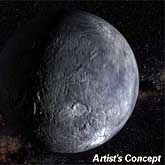
Does Anybody Really Know What Time It Is?
So, what, exactly, is the watch on your wrist, Big Ben in London, or the national atomic clock in Boulder, Colorado, actually measuring? The first definition of a second was 1/86,400 of the average ... Continue reading

The Constellations
The random arrangement of the stars visible to the naked eye has remained essentially unchanged since the time of the first written records. One of the earliest complete lists we have was compiled in ... Continue reading
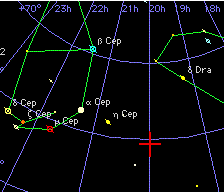
Uncharted Meteors
In 1967, NASA's Mariner 4 spacecraft was cruising through the solar system, not far from Earth, when something unexpected happened. 'Mariner 4 ran into a cloud of space dust,' says Bill Cooke of the ... Continue reading
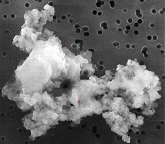
A Hurricane In Brazil?
Hurricanes are terrifying. They rip trees right out of the ground, hurl cars into the air, and flatten houses. Their winds can blow faster than 100 mph. Some hurricanes have been known to pull a wall ... Continue reading
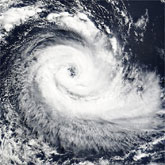
Catch A Shooting Star
A meteor, sometimes called a 'shooting star,' can be the brightest object in the night sky, yet meteoroids are the smallest bodies in the solar system that can be observed by eye. Wandering through ... Continue reading

The Fourth State of Matter
There are three classic states of matter: solid, liquid, and gas; however, plasma is considered by some scientists to be the fourth state of matter. The plasma state is not related to blood plasma, ... Continue reading

Does The Sun Go A Bit Wobbly?
Our Sun may seem an enduring, unwavering beacon in the sky, but in truth it has a 'heartbeat' of sorts--a pulsation between dimmer and brighter phases so slow that it only 'beats' 9 times each ... Continue reading

An Old Science Experiment On The Moon
The most famous thing Neil Armstrong left on the moon 35 years ago is a footprint, a boot-shaped depression in the gray moondust. Millions of people have seen pictures of it, and one day, years from ... Continue reading
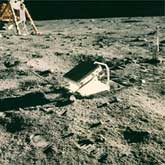
Magnitude of an Astronomical Object
'Visual magnitude' is a scale used by astronomers to measure the brightness of a star. The term 'visual' means the brightness is being measured in the visible part of the spectrum, the part you can ... Continue reading
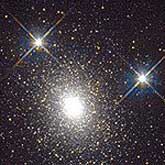
The First Starlight
Imagine being able to see our Universe 14 billion years ago when it was just a baby. If we had a time machine, we could go back and watch how its infant features emerged after the Big Bang. There are ... Continue reading
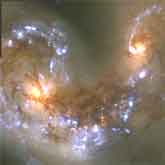
Ultraviolet Light
Ultraviolet light is a form of radiation which is not visible to the human eye. It's in an invisible part of the 'electromagnetic spectrum'. Radiated energy, or radiation, is given off by many ... Continue reading

You Can Learn A Lot From A Microbe.
You can learn a lot from a microbe. Right now, a tiny critter from the Dead Sea is teaching scientists new things about biotechnology, cancer, possible life on other worlds. And that's just for ... Continue reading
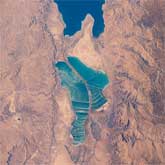
Wernher Von Braun
Wernher Von Braun was one of the world's first and foremost rocket engineers and a leading authority on space travel. His will to expand man's knowledge through the exploration of space led to the ... Continue reading

The Antennae
NASA's Chandra X-ray Observatory has discovered rich deposits of neon, magnesium, and silicon in a pair of colliding galaxies known as The Antennae. The deposits are located in vast clouds of hot gas. ... Continue reading
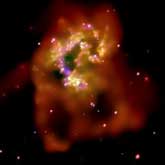
Solar Spitwads
Take a piece of paper. Make a little wad. If you're a kid, spit on it. Put it in a straw and blow hard. If your teacher sends you to the principal's office, here's your excuse: you were making a model ... Continue reading
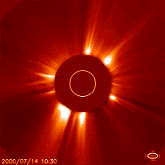
Sundials, Ancient Clocks
The earliest and simplest form of sundial is the shadow stick. The time of day is judged by the length and position of the stick's shadow. Some nomadic peoples still use this method for timekeeping. ... Continue reading
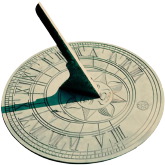
Near-Earth Supernovas
Supernovas near Earth are rare today, but during the Pliocene era of Australopithecus supernovas happened more often. Their source was an interstellar cloud called 'Sco-Cen' that was slowly gliding by ... Continue reading

A Shear Mystery
Everyone has had problems with a ketchup bottle at one time or another. After struggling and only getting a few drops, a flood suddenly gushes out and buries your food. With perfect timing, the ... Continue reading

The Real Lord of the Rings
Why is Saturn the only planet with bright, easily seen rings? Saturn is not the only planet in our solar system with rings. Jupiter, Neptune and Uranus all have rings. Jupiter's rings are much smaller ... Continue reading
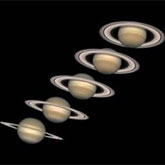
Tick-Tock Atomic Clock
Modern navigators rely on atomic clocks. Instead of old-style springs or pendulums, the natural resonances of atoms -- usually cesium or rubidium -- provide the steady 'tick' of an atomic clock. The ... Continue reading
